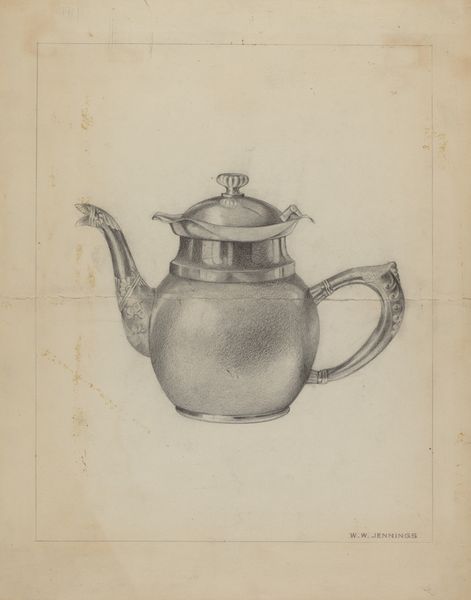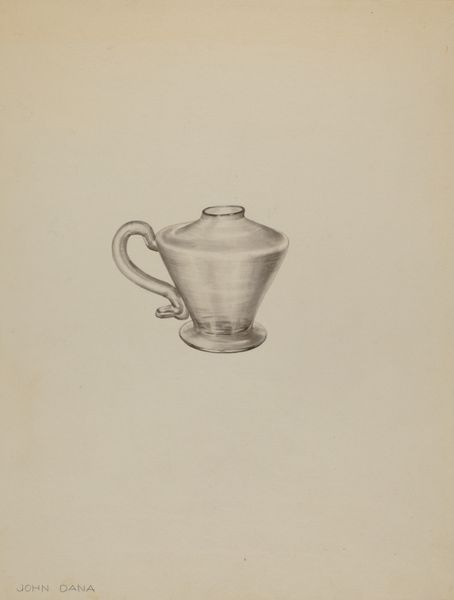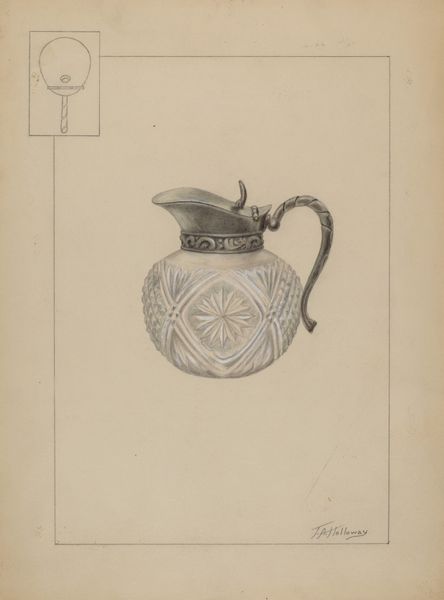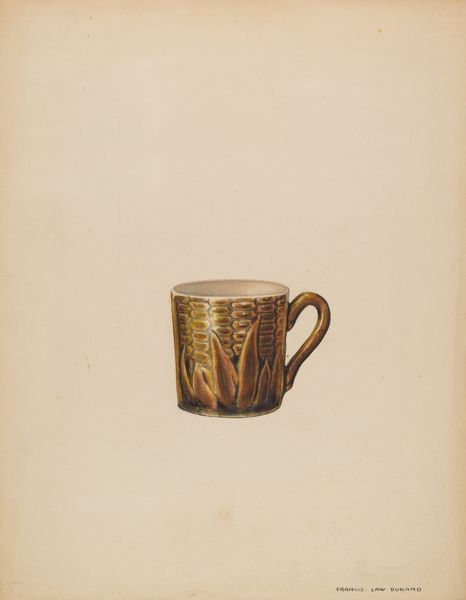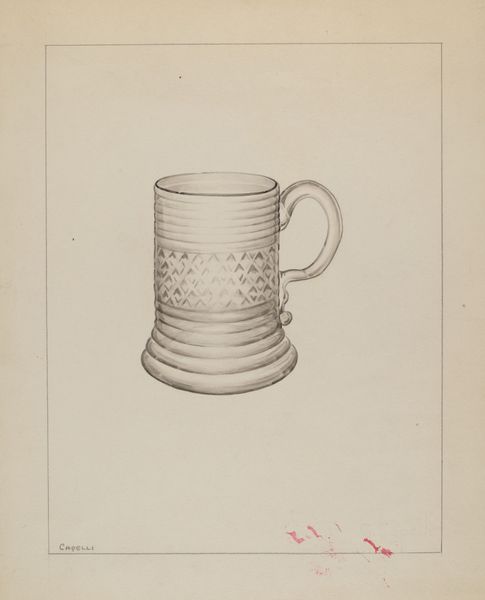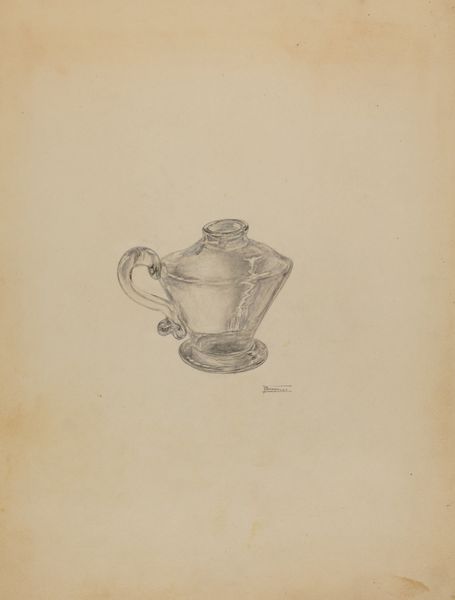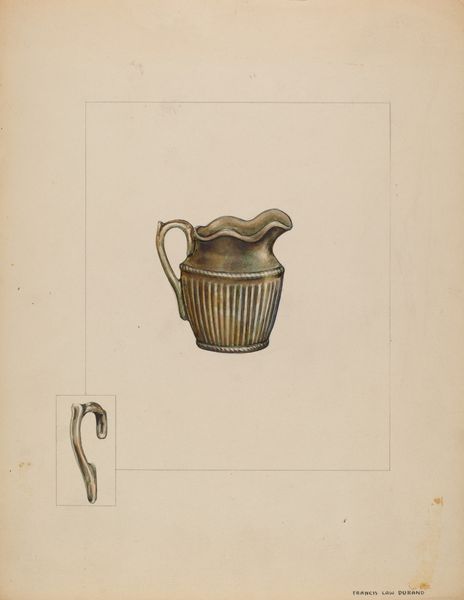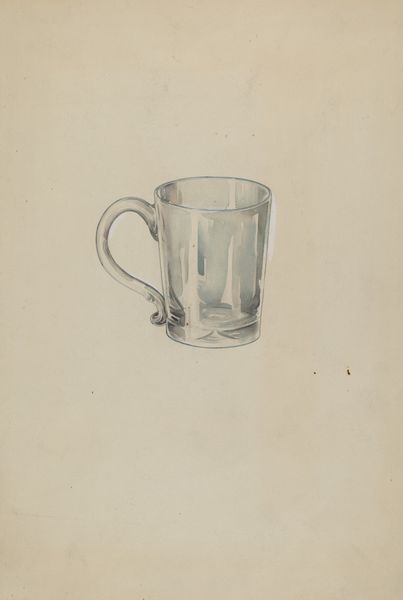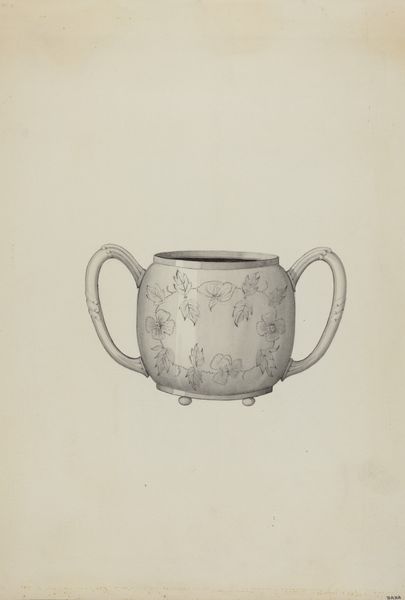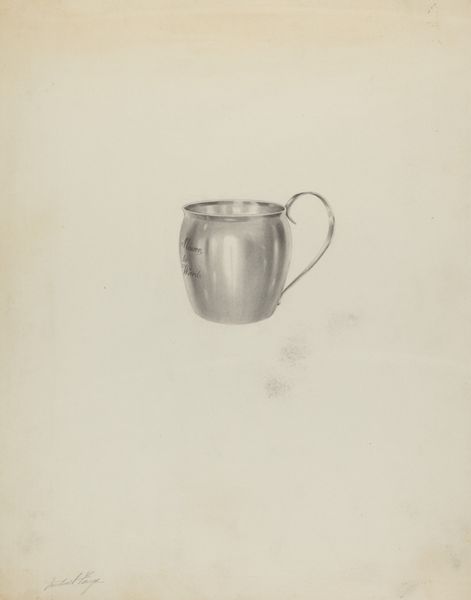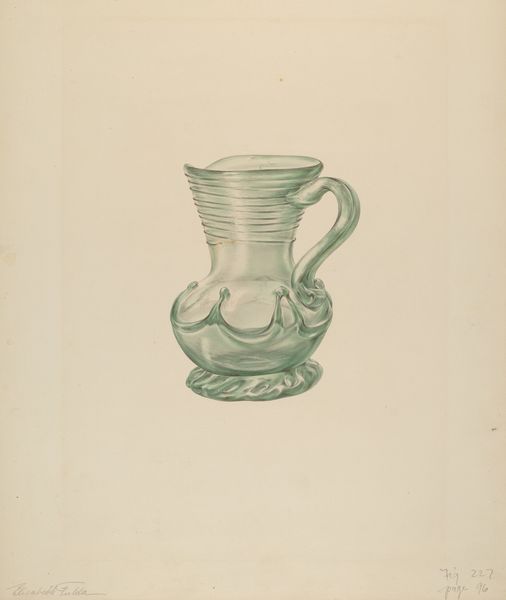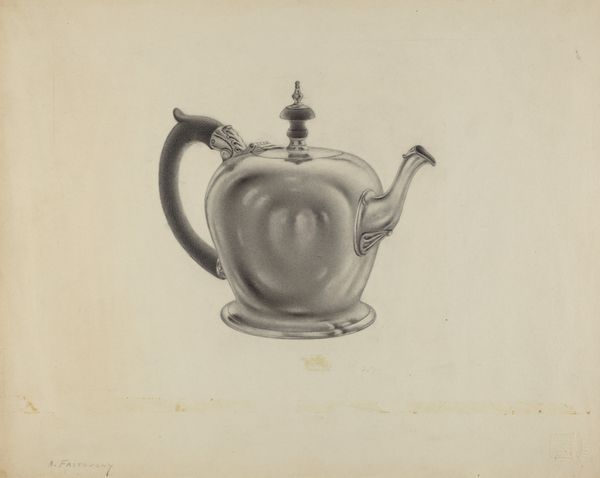
drawing, pencil
#
pencil drawn
#
drawing
#
aged paper
#
toned paper
#
light pencil work
#
pencil sketch
#
sketch book
#
personal sketchbook
#
pencil
#
sketchbook drawing
#
pencil work
#
sketchbook art
#
realism
Dimensions: overall: 29 x 22.6 cm (11 7/16 x 8 7/8 in.)
Copyright: National Gallery of Art: CC0 1.0
Editor: This is John Tarantino's "Mustard Pot," from around 1936, rendered in pencil on what looks like aged paper. It's surprisingly detailed for what appears to be a simple sketch. What do you see in this piece, beyond just the representation of a functional object? Curator: I see a focused investigation of materiality and the means of representation. Look closely at how Tarantino uses the pencil to mimic the reflective qualities of, presumably, metal or glass. He is not just depicting a mustard pot, he's exploring how we translate three-dimensional, tactile objects onto a two-dimensional surface. The sketchbook context is critical. Editor: A sketchbook drawing, so perhaps a study? Does the 'aged paper' indicate something about how it might have been perceived at the time? Curator: Precisely. The aged or toned paper suggests this was not meant for immediate consumption as a 'finished' artwork. This leads us to question: what constitutes art? Is it the final polished product, or the process of observation and mark-making? Consider also the labor involved, the time spent meticulously rendering this everyday object. Is there a subtle commentary on the value, or lack thereof, placed on skilled craftsmanship? Editor: So you're saying the value lies in the artistic labor and the study of representation itself, rather than the object depicted. It feels like it pushes back on the idea of ‘high art.’ Curator: Exactly. It prompts us to reconsider how we define art and to acknowledge the inherent artistry in the act of seeing and translating, and perhaps of daily life and the utensils we choose. What does that object itself imply in 1936? Editor: That's fascinating, it really shifts how I view seemingly simple sketches. Curator: Indeed, and recognizing the social and material context is essential. We move beyond aesthetics to recognize the economic, political, and social implications embedded in everyday items and their artistic depictions.
Comments
No comments
Be the first to comment and join the conversation on the ultimate creative platform.

